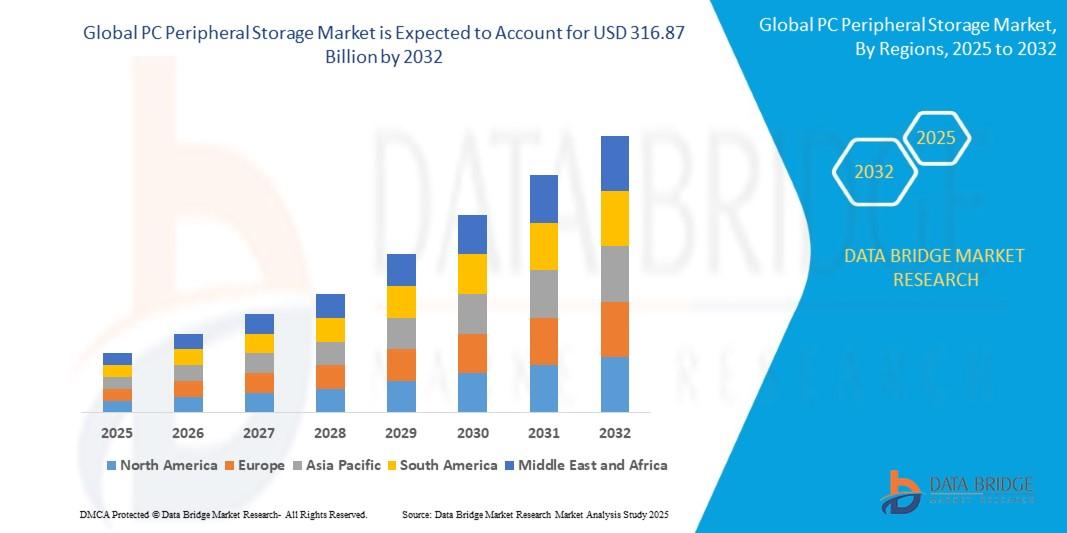Sales BDC: How AI‑Powered Business Development Centers Are Revolutionizing Car Sales

In the increasingly competitive automotive world, a dealership’s ability to capture, engage, and convert leads is the difference between survival and thriving. The Sales Business Development Center (Sales BDC) plays a critical role in this chain—serving as the bridge between incoming interest and actual showroom visits or sales. With AI entering the picture, Sales BDCs are evolving fast—becoming faster, more reliable, and dramatically more efficient.
This article explores what a modern Sales BDC is (levelled up with AI), what key features distinguish high‑performing ones, what measurable gains you can expect, how to implement one well, and pitfalls to watch out for.
What Is a Sales BDC — And Why It Matters
A Sales BDC is a dedicated unit in a dealership (or a system) focused on lead management, prospect engagement, appointment setting, and overall increasing conversion from inquiry to sale. Traditional Sales BDCs might have been staffed by human agents handling calls, emails, text follow‑ups, and scheduling. But modern Sales BDCs, especially those powered by AI, do much more:
-
Respond instantly to digital leads (web form, chat, SMS, email) as soon as they arrive.
-
Qualify leads: understand which customers are serious, timeline, preferences, trade‑ins, budgets.
-
Schedule appointments (showroom visits, test drives) and send confirmations/reminders.
-
Follow up persistently with leads that haven’t committed, to keep interest alive.
-
Route “hot” leads (those showing high intent) to human sales reps for personalized handling.
-
Track performance metrics (response time, contact rate, show rate, conversion, etc.) to continually improve.
Sales BDC is the engine that ensures leads don’t go cold. And when AI is introduced, the speed, consistency, and scale of this engine improve dramatically.
What Sets AI‑Powered Sales BDCs Apart
Drawing on what BDC.AI offers and industry benchmarks, here are the features & capabilities that make a Sales BDC truly effective when augmented by AI:
-
Lightning‑Fast Response Time
The moment a lead comes in—AI can respond within seconds (BDC.AI reports ~2 seconds for many inquiries). That speed prevents losing leads due to delay or perceived neglect. -
24/7 Availability
Prospects don’t only engage during business hours. AI enables round‑the‑clock engagement so no lead is lost just because someone submitted a query at night or during weekends. -
Omnichannel Lead Handling
Handling leads across SMS, email, chat, social media, website forms—keeping consistent tone and tracking across all these channels ensures no inquiry slips through the cracks. -
Customizable Brand Voice & Communication
AI agents can be tuned to match dealership’s voice, brand tone, vernacular, and messaging styles. Leads see consistent branding and personality whether via email or chat or text. -
Real‑Time Integration with CRM/DMS/Inventory
The AI must know what vehicles are in stock or in transit, pricing, appointment calendars, and should update leads’ info accordingly. If the AI promises something not in inventory or books appointments when unstaffed, trust erodes. -
Lead Qualification & Prioritization
Not all leads are equal. AI uses lead scoring based on behavior, intent, previous interactions, responsiveness. Hot leads are flagged for immediate human follow‑up; others enter nurture tracks. -
Automated Appointment Scheduling & Reminder Workflows
AI sets up appointments, confirms them, sends reminders, allows rescheduling—this reduces no‑shows and mismatches, freeing sales teams from administrative burden. -
Persistent Follow‑Ups / Nurture Paths
Many prospects need multiple touches before they convert. AI enables scheduled sequences of follow‑ups via different channels (text, call, email) tailored by response or lack thereof. -
Performance Analytics & Salesperson‑Level Reporting
Metrics such as response time, contact rate, appointment set rate, show rate, sale conversion, engagement rate per lead, etc. Need dashboards that allow monitoring and improvement. BDC.AI publishes its KPIs. -
Scalability & Cost Efficiency
AI scales: handling many more leads without hiring proportionally more staff. It reduces training, overhead, human error. Cost per lead and cost per conversion fall with volume.
What BDC.AI Offers in Its Sales BDC Approach
BDC.AI is one of the vendors leading this transformation. From what its public materials show, here are important aspects of how its Sales BDC works, which bode well for dealerships:
-
It integrates with over 20 CRM/DMS systems, allowing real‑time data sharing, so lead info, inventory, pricing, calendar availability are accurate.
-
Multilingual support (10+ languages), enabling reaching customers in preferred language; important in diverse markets.
-
Omnichannel: SMS, email, chat, social—all supported.
-
Customizable AI agents to align with brand tone and dealership processes.
-
Performance benchmarks: lead response under 60 seconds; contact rate around 50‑70%; appointment set rate ~25‑35%; show rates ~65‑80%; sold‑from‑appointment ~20‑30%; number of touches per lead ~6‑10.
-
Strong focus on “relentless follow‑ups”—ensuring leads don’t go cold with persistent, respectful multi‑touch outreach.
-
Security and enterprise reliability: SOC‑2 compliant, always‑on, etc.
Measurable Gains from Implementing Sales BDC Well
If a dealership adopts a well‑designed, AI‑powered Sales BDC following the features above, here are the gains that are realistic (based on BDC.AI’s own reporting and industry data):
-
Lead response times drastically reduced, often from hours to seconds. Faster response correlates strongly with higher contact and conversion rates.
-
Increased appointment set and show rates: When follow‑ups, reminders, scheduling are handled smoothly, more leads become showroom visits or test drives. Show rate benchmarks in high‑performing BDCs reach 65‑80%.
-
Higher conversion from appointment to sale: Leads that are properly qualified, nurtured, and prepared tend to convert at a much higher rate.
-
Cost reductions in staffing and operations: Less need for large BDC teams manually handling every inquiry; less time wasted on cold leads; reduced training/turnover overhead. BDC.AI claims up to 60% cost reductions while handling many more leads.
-
Scale of operations: Ability to manage 10× more customer interactions without adding proportional headcount. More leads engaged, more conversations, more appointments without overburdening your team.
-
Better customer satisfaction: Response time, consistency, accuracy, personalization lead to better customer experience, better trust, more referrals and repeat business.
Keys to a Successful Sales BDC Implementation
Having seen what a good Sales BDC looks like, here are strategies that help ensure successful deployment and maximized ROI:
-
Clarify Goals & KPIs Upfront
Before rolling out AI‑assisted Sales BDC, define what you want: reduce response time to under X seconds, increase show rate to Y%, reduce lead drop offs, cost per sale, etc. Use the benchmarks that BDC.AI publishes as reference. -
Audit Existing Lead Flow & Bottlenecks
Map how leads come in, where delays occur, what channels are slow, what follow‑ups are manual and inefficient. This diagnostic work helps identify what to automate first. -
Choose a Platform with Strong Integration & Customization
Ensuring your BDC tool works closely with CRM, deals with real‑time data, supports your brand voice, handles multi‑channels, and handles multilingual communication. -
Design Follow‑Up Sequences & Escalation Rules
Define how many touches, via which channels, with what messaging. Also when to escalate to human sales agents (for example: complex requests, trade‑in or negotiation, vehicle financing, or when a lead explicitly wants to talk to a person). -
Ensure Human + AI Synergy
AI handles initial contact, routine follow‑ups, scheduling. Human agents should step in where negotiation, high value, emotional or high complexity matters. A hybrid model tends to outperform pure automation or pure manual models. -
Enable Transparent, Real‑Time Reporting
Dashboards showing response times, contact rates, appointment set/show, conversion, staff performance are crucial. Identify weak points and adjust messaging, channel usage, lead allocation accordingly. -
Continuous Improvement of Scripts, Messaging & Timing
Messaging templates are not set‑and‑forget. Monitoring which messages or follow‑ups get better responses, adjusting tone or timing is essential. A/B testing helps. -
Train & Align Staff
Sales reps, BDC agents, service staff must understand the new workflows, how handoffs work, expectations, and their role. Buy‑in from team reduces friction and errors. -
Maintain Data Accuracy & Inventory Integrity
If AI promises inventory or appointment slots incorrectly, trust is lost. Sync inventory, ensure calendar availability, ensure pricing is up to date. -
Optimize Customer Experience & Transparency
While speed matters, clarity, tone, fairness, and user experience matter just as much. Let customers know what to expect, confirmation, follow‑ups, human contact where needed.
Common Pitfalls & How to Avoid Them
While Sales BDCs powered by AI have major upsides, there are pitfalls that dealerships should watch out for:
-
Relying too much on automation without human fallback, especially for leads wanting personal contact.
-
Messaging that feels generic, impersonal or robotic — hurting customer trust.
-
Data inconsistencies (inventory, pricing, appointment availability) leading to overpromising.
-
Overlooking follow‑ups and letting leads go cold after initial contact.
-
Poor handoff from BDC to salespeople – missing context or momentum.
-
Not monitoring performance metrics, leading to stagnation or unrecognized failures.
-
Staff resistance or low adoption due to lack of training or unclear responsibilities.
Sales BDC Best Practices for 2025 (per BDC.AI Research)
BDC.AI’s research and best practices lay out specific practices that high performers adopt. Some of these include:
-
Rapid Response Protocols: Answering every lead in under 5 minutes (in fact, aiming for seconds) to boost conversion.
-
Multi‑Channel Engagement: Using phone, text, email, live chat, social media simultaneously, making sure no channel is ignored.
-
Intelligent Lead Scoring & Qualification: Prioritize based on behavior, intent, financial readiness. Send hot leads immediately to sales floor.
-
Personalized Follow‑Up Messaging: Using customer preferences, previous interactions to tailor messages; making them feel less templated.
-
Consistent Appointment Scheduling & Reminders: Confirm, remind, enable rescheduling easily. Ensure that scheduled appointments convert to showups.
-
Performance Tracking & Continuous Improvement: Use key metrics and regular reviews to fine‑tune processes, messaging, responsiveness.
What Dealerships Can Expect as Outcomes
Taken together, implementing a modern AI‑powered Sales BDC with the above features and best practices tends to produce the following outcomes:
-
Boosted Conversion Rates: More showroom visits and test drives from online leads; better sales from appointments.
-
Higher Show Rates: With stronger follow‑ups and reminders, fewer no‑shows for set appointments.
-
Reduced Response & Lead Drop‑Off: Leads are less likely to be lost due to delayed responses; fewer “cold leads”.
-
Lower Costs & More Efficiency: Less manual work, fewer staff needed for routine tasks; better ROI per lead.
-
Improved Customer Experience: Faster replies, consistent communication, less friction, more satisfaction.
-
Scalability: Ability to handle surges in leads (promotions, ad campaigns, seasonal demand) without falling behind.
A Sales BDC is central to converting interest into sales. In today’s market, speed, consistency, personalization, and data are not optional — they are prerequisites. Dealer AI, as offered by BDC.AI and others, enables dealerships to move from reactive and manual lead follow‑up to proactive, near‑instant, multichannel engagement with better outcomes and lower cost.
Dealerships investing in a Sales BDC with AI stand to gain faster lead response, greater show‑up rates, higher conversion, improved operating efficiencies, and happier customers. But success demands good design: matching technology, workflows, data, staff, messaging, and monitoring so that no detail derails momentum.






